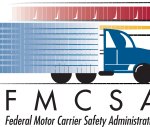
Smith Transport Gives You the 411 on CSA’s Vehicle Maintenance Changes
October 21, 2013 7:37 pm CommentSafety is of utmost importance in the trucking industry, and proper maintenance is at the top of the list for safety checks. There are many good reasons for that, and many people whom it affects. Truck drivers face long hours on the road, hauling heavy loads, other motorists need to share the road with truck drivers safely, and the load being hauled needs to reach its destination on time and intact. For all of these reasons and more, the new CSA industry regulations are designed to protect all parties, making trucking safe and enjoyable work. Ahead, you will learn specifically how new CSA maintenance rules affect the industry.
The CSA Vehicle Maintenance BASIC program has been strengthened to include a significant number of new violations related to vehicle upkeep. Violations are most often enforced during roadside inspections. It works on a points system, with serious violations meaning more points.
Most of the violations are common-sense matters for which there are simple solutions. It also provides a strong incentive for both carriers and truckers to keep the whole operation running safely. Ahead are five of the most common violations, along with how you can make sure to stay on top of them.
- Inoperative standard lighting, such as tail lights, head lights, and turn signals, will mean a violation. Many truckers combat this by leaving their lights on all the time, making it easier to spot when one goes out.
- Inoperative safety light, such as reflective striping or beacon lights on large loads, is another common violation. This just requires a simple check whenever you start your truck.
- Poor tire tread depth, in this case less than 1/16 of an inch, can lead to a violation. Make sure to stay on top of tire measurements.
- Fluid and oil leaks are easy to spot, but if you miss them a violation is waiting. For most truckers, this is something commonly checked anyway.
- Brake violations of all types are high on the list, and can cost serious points. Even without these added regulations, it’s obviously vital for safety to stay up on brake maintenance, as most truckers do.
The violations listed above are some of the most common. The full list is more comprehensive, and is worth studying for anyone who is involved, or wishes to be involved, in the trucking industry. Below are some of the positive ways that these new regulations will affect the industry.
- First, let’s get something important out of the way. When it comes to increased maintenance requirements and industry regulations, the bottom line is that it’s good for all involved in the business. In reality most truckers already take great care of their trucks, because a well-maintained truck is the key to doing their jobs safely and effectively.
- Aside from the safety aspect, better maintenance also leads to more runs being completed on time. After all, who hasn’t broken down on the side of the road at one time or another and wished they had just taken the time to check out their vehicle before they left? With proper maintenance, the odds of your run stopping in its tracks are greatly diminished.
In the end, these regulations are all designed to keep you safer on the road. With well-maintained truck that’s running great, you will be able to get your load to its destination on time, with full confidence that you, your precious cargo, and the drivers with whom you share the road are safe. As the industry continues to evolve, staying current with new CSA regulations will prove useful and beneficial to all truckers.
Thanks for reading Smith Transport’s blog and be sure to follow us on Facebook!




